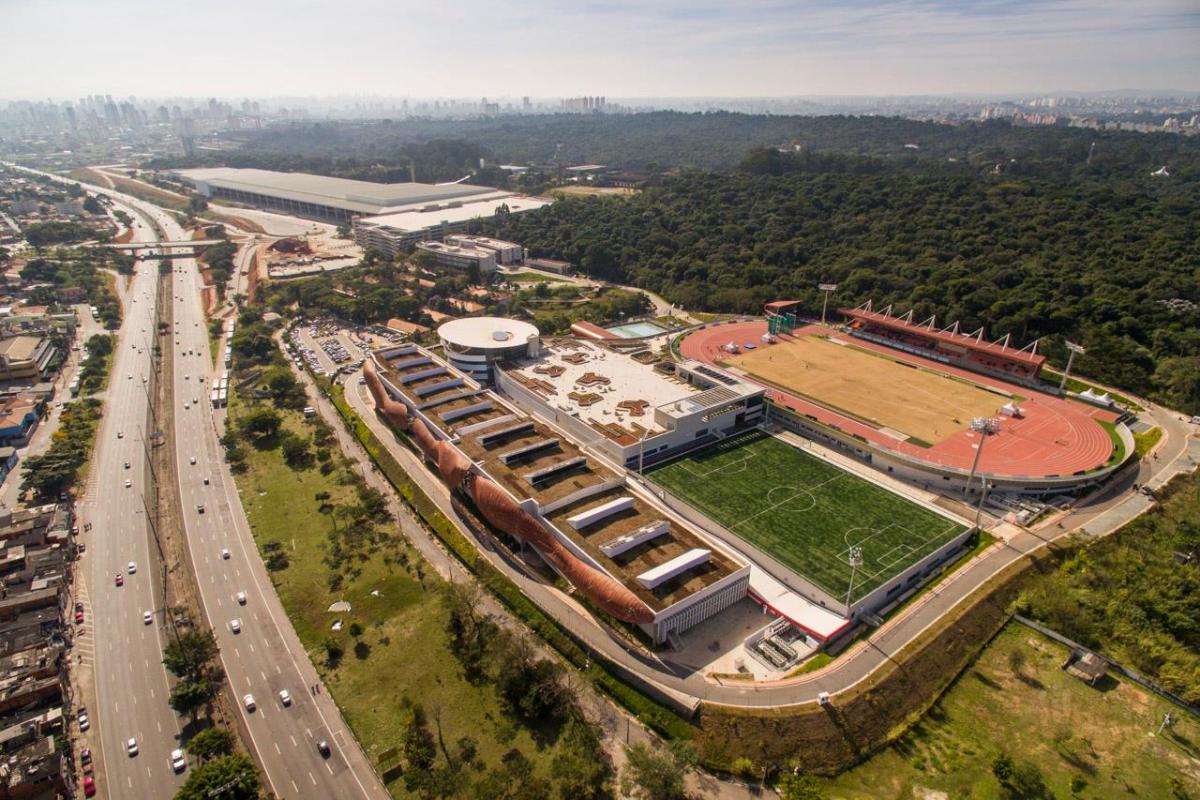One of Rio 2016’s legacies can be seen in Sao Paulo
The Brazilian Paralympic Centre is a major legacy of Latin America’s first Paralympics, whilst many Rio 2016 volunteers are now helping at the Youth Parapans. 18 Mar 2017
Aerial photo of the Brazilian Paralympic Centre in Sao Paulo, Brazil.
"I am really impressed with the standard here and with the structure that has been built for the competition."
The new Brazilian Paralympic Centre and the high number of people involved in the 2017 Youth Parapan American Games are two early legacies of the Rio 2016 Paralympic Games.
Delegations from the different countries competing at Sao Paulo 2017 already had the opportunity to visit and train at the Brazilian Paralympic Centre, a major structural legacy of Latin America´s first Paralympics inaugurated in May 2016.
First impressions of the participants, both athletes and coaching staff, were overwhelmingly positive.
“I am really impressed with the standard here and with the structure that has been built for the competition,” said Argentina´s football 5-a-side coach German Marquez.
“The Paralympic Centre could be an Olympic Park for senior competitions, no doubt about it. The truth is Brazil always impress with the things they do for sport, it is the country that works hardest in South America.”
Eleven of the 12 sports which make up the programme of Sao Paulo 2017 will take place at the Paralympic Centre. Only the wheelchair tennis competition was moved to Clube Esperia, located in the north zone of Sao Paulo, in order to meet tournament requirements regarding the number of courts.
Brazilian swimming head coach Leonardo Tomasello added: “Today our idea was to have all of our athletes training together, to get to know everyone’s strengths and the sharpness of each athlete.
“They trained really well, everyone managed to complete the training session in the way we intended. The coaches were able to alternate between all of the athletes, so what is important now is to maintain this standard until competition day.”
As a consequence of the 2016 Paralympics, many more people started to get involved with Para sports. Many Rio 2016 volunteers have joined the Sao Paulo workforce.
Vivian Souza had her first experience with Para sports at Rio 2016, volunteering in the football 5 and wheelchair tennis venues. Now, she is amongst the 270 people chosen to work at the Youth Parapans which begin on Monday (20 March).
“It is an experience which changed my life,” said Souza. “Before, I had not even watched Para sports on television. I really enjoyed it, not only the wheelchair tennis and 5-a-side football – which I took part in – but all of the sports.
“I think it is an incredible example of overcoming difficulties. The Paralympic athletes do the impossible.”
Jose Julio Gaviao, volunteers programme coordinator for Sao Paulo 2017, added: “Some people who took part in competitions as volunteers are today working in the area, even in the Brazilian Paralympic Committee itself.
“We do not see this programme as an obligation, as a policy of the International Paralympic Committee, instead, we see it as a satisfaction. Here, we treat our volunteers as students, as protégés.”
------------
Over 800 athletes, aged 12-20 years old, from 20 countries are expected to participate in Sao Paulo, with 12 sports being contested: athletics, boccia, football 5, football 7, goalball, judo, powerlifting, sitting volleyball, swimming, table tennis, wheelchair basketball and wheelchair tennis.
Buenos Aires 2013 attracted more than 600 athletes from 16 countries, who competed across 10 sports. Brazil topped the medal table and 15 countries reached the podium at least once.
Barquisimeto, Venezuela, staged the inaugural edition in 2005, with athletes from 10 countries competing, whilst a total of 14 countries attended the event in Bogota, Colombia, in 2009.




